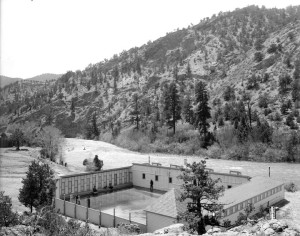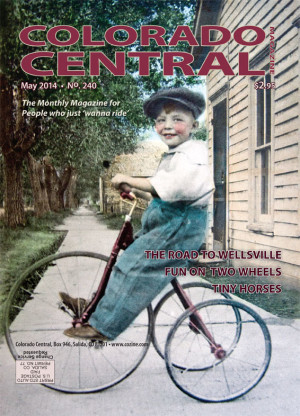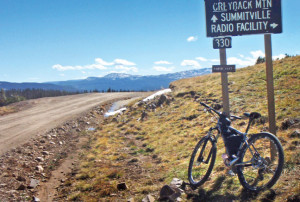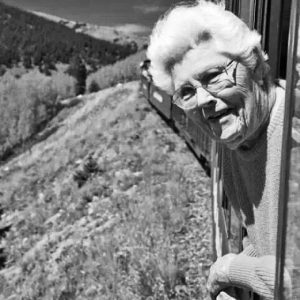Central Colorado lost a good friend and great heart and mind this winter – attorney Paul Snyder of Westcliffe. Among other things, Paul Snyder was a dedicated advocate for what might be called the “working landscape” in our mountain valleys. The ranchlands that are a “working landscape” because, first, they represent a long-standing foundation for the human economy in these valleys, but second (or maybe this is first), because the ranches “work” ecologically and sustainably, when worked with some degree of care. A landscape both functioning and functional.
This seems worth mentioning this year, which marks the 50th anniversary of the Wilderness Act. I will say upfront that, while I am not an opponent of the Wilderness Act, I have never been able to muster a lot of enthusiasm for it either. I’m a human being, a member of a species generally out of control on the planet, and that is a bad situation that we began tentatively, fumblingly, to try to address on many fronts half a century ago, and one of the first steps was to ban ourselves as anything but visitors in the remaining undeveloped parts of our physical landscapes. To believe that “nature” is better off without us does not reflect the degree of empathy that, it seems to me, must underlie any serious effort to reform ourselves as a natural species.
While I never had a discussion with Paul Snyder about the wilderness movement, I would guess that he probably favored it. But for most of his working life as a lawyer, he focused on efforts to bring more intelligent structure to the ways in which Euro-Americans live on and with land that we have already “occupied.” Having set aside the relatively untouched lands, what can we do to improve our domination of the other 97 percent? That was the question that engaged him.
Before Paul Snyder moved to Central Colorado and the Wet Mountain valley, he lived in Boulder and was on the front lines of that community’s ongoing struggles with the rampant growth along Colorado’s Front Range. In the 1970s – the beginning of America’s “Environmental Era” – Paul served as Boulder’s special counsel for land use matters, and as such helped lead the charge on revising the Boulder Valley Comprehensive Plan, making it the state’s first legally binding (not just “advisory”) compact between the City and the County. He successfully defended the City when it was sued for restoring agricultural zoning to several thousand acres of land to protect them from development.
Boulder’s efforts to provide alternatives to the uncontained Front Range growth generated a lot of criticism elsewhere for arguably turning the city into a high-cost enclave for the well-off while increasing growth in and traffic from surrounding communities. In fact, those efforts may have been a true “mission impossible” up against the Front Range growth juggernaut – a possibility or probability that makes me nervous when, in the statewide water planning process I’m involved in, we imagine it might be possible to get that growth (and its consequent water needs) under control.
In any case, by the 1990s Boulder was no longer a place that a self-defined “small-town lawyer” like Snyder particularly enjoyed: hence the move to Westcliffe in 1998. There he continued to focus his private law practice on land use and conservation matters. On the public front, he served a decade as Westcliffe’s town attorney, and as such participated in the drafting and passage of a comprehensive plan for Custer County.
He also became very active in the San Isabel Land Protection Trust, an organization begun in 1995 to address “a variety of threats” to private lands below and surrounding the San Isabel National Forest in Custer, Fremont, Pueblo and Huerfano Counties, threats “including aging ownership, agricultural abandonment, population growth and competing water and resource interests,” according to the organization’s website, www.sanisabel.org.
The Land Trust’s “land protection” involves contracting “conservation easements” with private landowners, through either a legally established “land trust” or a government program, local, state, or federal. The landowner donates or sells part of his property right to the contracting organization or government. The result is a covenant on the property to keep it in its existing use – ranchland, forestland, water or other renewable resources – “in perpetuity.” The land can no longer be sold for development as real estate, mining, or other such change of use. This covenant becomes part of the “chain of title” for the land, passing on to subsequent owners.
Resulting tax benefits and payments to the landowners reflect the difference between the land’s value as a sustainable working landscape and its value for other more lucrative but less sustainable development. This can enable aging ranchers and farmers to retire while still selling or passing along the land as agricultural land. It can also help ranchers and farmers in early or mid-career by enabling them to invest in other income-producing activities. Ranchers have used the easement windfall to invest in their operation or buy local businesses, apartment buildings, and the like.
The San Isabel Land Protection Trust was one of a number of land trusts that came into being in the 1990s and early 2000s: the Crested Butte Land Trust and Gunnison Ranchlands Conservation Legacy here in the Upper Gunnison, the Land Trust of the Upper Arkansas, the Crestone/Baca Land Trust, and Rio Grande Headwaters Land Trust in the Upper Rio Grande. Altogether, these organizations have conservation easements on close to 100,000 acres of private land in Central Colorado. Much of the funding for the easements comes through a Colorado State Income Tax Credit, which is resalable, or the GOCO fund and other federal, local, or private funding.
The land trust movement here in the headwaters regions for the Southern Rockies (aka Central Colorado) is fueled to some extent by nostalgia and aesthetics. Most of us have never farmed and never will, but we embrace our American “agricultural heritage,” especially when it looks like what we see in the mountain valleys. We know in a half-informed way what “agribusiness” looks like in other places, driven by the need to feed too many people too cheaply. Aesthetically, we love the “open space” that the hay meadows create – a natural-looking open space, often spotted with deer, elk and other wildlife as well as cattle. The rich, sometimes almost fluorescent green of the irrigated hay is a beautiful contrast to the more somber gray-greens and red-browns of sage brush and rock above the ditches.
But the pastoral beauty of that landscape is not just “makeup.” We say “beauty is only skin deep” – but on planet Earth, life itself is only “skin deep,” a comparatively thin and fragile skin covering the floating mantle of lifeless rock over fire. For the most part, when done carefully, with a couple three generations of experience, this headwaters agriculture enhances the earth’s beautiful skin of life.
Gunnison biologist Lynn Cudlip, in commenting on the Colorado water we are currently drafting in every Colorado river basin, said it better than I can:
“Some ecosystem services related to water include water purification and storage, wildlife habitat maintenance, stream stabilization, groundwater recharge and discharge, and carbon sequestration. Gunnison Basin’s flood irrigation leads to development of wetlands which have extensively expanded those ecosystem services. While we have quantified how many acres are irrigated and can count the tons of hay produced or forage available, we have not quantified these other services these irrigated hay meadows provide. The type of irrigation that occurs in Gunnison County simulates a wetland environment where soils are saturated for an extensive part of the growing season. Like wetlands, the irrigated hay meadows store water for later release to streams; they are highly productive and as a result sequester carbon; they provide habitat for small mammals and birds which are a food source for larger mammal and avian species. These services haven’t been quantified in the Gunnison Basin. Any new water supply project which would reduce the amount of irrigated land should be evaluated for its impact to these services.”
That thin skin of beauty and life (“free” ecosystem services) was what Paul Snyder spent his last couple decades helping maintain in the Wet Mountain Valley – surely one of the most magnificent mountain valleys anywhere, with its broad floodplain rising in an uninterrupted and ever-steepening sweep to the peaks of the Sangre de Cristos. Above the ditches, much of that landscape is wilderness, if only de facto, and I’ve no real problem with officially preserving that as such. But maintaining the valley’s successful “working landscape” may be a greater and more important challenge. A place where humans have evolved a way of using the land for food production without diminishing the land when done carefully and “conservatively,” even enhancing the land in some respects. A study on the Front Range indicated that ranchland had higher bird numbers and diversity than adjacent unworked land.
A question that occurs – to me, at any rate – is whether the rest of us should be paying more for these ecosystem services that we all enjoy on the backs of the ranchers. Most of the land trusts have a waiting list of ranchers and farmers that could use the cash infusion to help stabilize and improve their ongoing investment in the land. Should the emerging Colorado Water Plan include a more stable and dedicated source of public funding for sustaining these ecosystem services, which would in turn make mountain ranching a little less financially precarious – paying the ranchers for work they are already doing for all of us?
George Sibley writes from the Upper Gunnison where his working landscape these days has him up to his chin in water issues.





